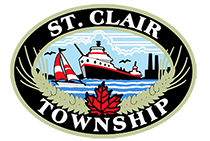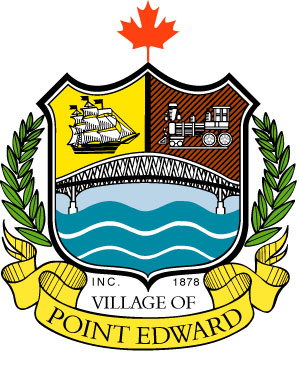Our Connections

Aamjiwnaang First Nation
The Aamjiwnaang First Nation sits on the BASES Emergency Preparedness Committees. In 1992, the Federal Government assigned fiduciary responsibility of providing First Nations in Ontario with Emergency Preparedness assistance to Emergency Management Ontario (EMO). The Chief or Delegate may take such action(s) and may make such order(s) as he/she considers necessary to mitigate the emergency. The AFN Emergency Response Plan is authorized by the Chief and Council of Aamjiwnaang First Nation by Band Council Resolution. If the City of Sarnia Emergency Operations Centre is activated, the AFN Chief or his/her representative goes to this EOC to represent Aamjiwnaang’s interests and to act as the community conduit for concerns at the local and the city levels. The AFN Chief then makes the determination whether the Aamjiwnaang Emergency Control Group should be activated.

City of Sarnia
The City of Sarnia sits on the BASES Emergency Preparedness Committees. Sarnia Emergency Planning is based at Sarnia Police Station and operates out of the Emergency Operations Centre. Guidance is provided by the “Sarnia Emergency Management Program Committee” consisting of the Sarnia Fire Chief, the Sarnia Police Chief (and/or designate), the Director of Parks & Recreation, the ARES Emergency Coordinator and the City of Sarnia Community Emergency Management Coordinator (CEMC). Sarnia Emergency Preparedness and Management maintains an Emergency Operations Centre and Emergency Management Response Plan. During an emergency, the Primary Control Group assembles to make policy and administrative decisions relevant to the emergency. The City of Sarnia Emergency Response Plan is designed to work in cooperation with City Department contingency plans, local industrial plans, other municipal plans, and with upper tiered Government Emergency Plans.

County of Lambton
Lambton County sits on the BASES Emergency Preparedness Committees. Lambton County Emergency Management explains how, for the purposes of emergency planning, the County of Lambton is considered an “upper tier municipality”. As such, it works collaboratively with all local municipalities across the county to plan and prepare for emergency scenarios. During an emergency response, a group of individuals representing different agencies could be assembled to help coordinate the response under the leadership of the Head of Council. Collectively, the group is known as the Community Control Group (CCG) and it holds general responsibility for protection of public safety, property, and continuation of County services. To achieve this, the two primary functions of the CCG are to:
- Oversee and coordinate the County’s response and recovery; and,
- Support the on-scene responders and obtain any required resources and equipment on their behalf.

St. Clair Township
St. Clair Township sits on the BASES Emergency Preparedness Committees. The St. Clair Township Emergency Response Plan makes it clear that the primary responsibility for emergency planning and emergency response remains at the local level. The Township prepares a Township Emergency Plan which sets out basic standards and procedures that should be included in local emergency plans. The Township serves to coordinate and integrate local plans and encourages lower tier municipalities to adopt an emergency plan. The Township prepares an operational plan for the Township of St Clair which sets out how the various departments of the Township fit into local emergency plans, with available resources. Notably, the township specifically reinforces a continuation of support for existing emergency coordination agencies – including SL CAER.

Village of Point Edward
The Village of Point Edward sits on the BASES Emergency Preparedness Committees. The Village Community Emergency Management Coordinator works to ensure the Village is effective in its response to emergency situations and coordinates programming designed to protect and educate its residents on effective emergency management. Village of Point Edward emergency management services include fire suppression, medical assist, auto extrication, ice and water rescue, carbon monoxide detection, and emergency planning and management.

Emergency Management Ontario
BASES connects to Emergency Management Ontario through the government representatives on the BASES Emergency Preparedness Committees. In Ontario, all municipalities and provincial ministries are required to have an emergency management program. The requirements for these programs are set out in the Emergency Management and Civil Protection Act. Emergency Management Ontario supports municipalities and ministries in implementing their programs by providing them with advice, assistance, guidelines, training, and other tools.
- The Ontario Emergency Management and Civil Protection Act provides the legislative authority for municipalities to create an emergency response plan and procedures. It also prescribes howthe head of council of a municipality may declare an emergency and take actions to protect people and property.
- Ontario Regulation 380/04 establishes the minimum standards for emergency management programs required by municipalities and provincial ministries and supports the requirement in the Act for mandatory emergency management programs.

Ontario Ministry of Environment Conservation and Parks
BASES works with the Ontario Ministry of Environment Conservation and Parks (MECP) to ensure reporting and response processes are streamlined and clear. MECP is also directly involved in regional exercises to review reporting and response updates. In the event of an incident, an Environmental Officer documents information, assesses impacts, ensures response meets legal requirements, tracks and follows-up on clean-up, provides advice, and coordinates with other agencies. Additional information on general duties and powers of Officers are provided in the Ontario Environmental Protection Act.
- Ontario Regulation 675/98 requires ‘forthwith’ reporting of spills of pollutants to the Ontario Spills Action Centre, to the municipality in which the spill occurred and to the owner or person in control of the spilled pollutant.

Public Safety Canada
BASES connects to Public Safety Canada through the government representatives on the BASES Emergency Preparedness Committees. This organization, through the Emergency Management Act, recognizes the roles that all stakeholders play in Canada’s emergency management system. It sets out the leadership role and responsibilities of the Minister of Public Safety and Emergency Preparedness, including coordinating emergency management activities among government institutions and in cooperation with provinces. An Emergency Management Framework for Canada was revised and approved by Federal, Provincial, and Territorial Ministers in 2017. The Framework establishes a common approach for a range of collaborative emergency management initiatives in support of safe and resilient communities.

Environment Canada
BASES works directly with Environment Canada to ensure alignment of expectations on emergency preparedness requirements under the Canadian Environmental Protection Act. For example, the Environmental Emergency (E2) Regulations require emergency plans to be prepared, brought into effect and exercised — including communications with the potentially affected community.

TransCAER
BASES participates in meetings and shares information with Transportation Community Awareness and Emergency Response (TRANSCAER®) as organized through the CIAC and the Railway Association of Canada (RAC). TRANSCAER® members work with municipalities, emergency responders, and residents in communities along transportation routes to ensure they are informed about the products being moved through their area and prepared to respond to potential incidents involving dangerous goods. In 2015, the CIAC reported that the Sarnia-Lambton area had the highest participation (approximately 10x) of all TransCAER® location events.

City of Port Huron
Port Huron has a mutual aid agreement with the City of Sarnia, allowing for shared usage of emergency equipment in the event of a large-scale event. This is made possible through Port Huron’s Emergency Action Guidelines (EAG), which are designed to provide a single plan for all types of disasters, to organize, coordinate and direct the actions of the city relief forces in the event of disaster and save lives, property, and reduce damage. Officials from Port Huron share best practice information and actively engage in tabletop and field simulations with members of BASES.

United States Department of Homeland Security
The City of Sarnia Dispatch team connects directly to the United States Department of Homeland Security (DHS) and will make notifications during emergency exercises or actual events. BASES actively works with the DHS to plan, execute, and debrief learnings from large scale exercises that have the potential to impact both sides of our shared border.


